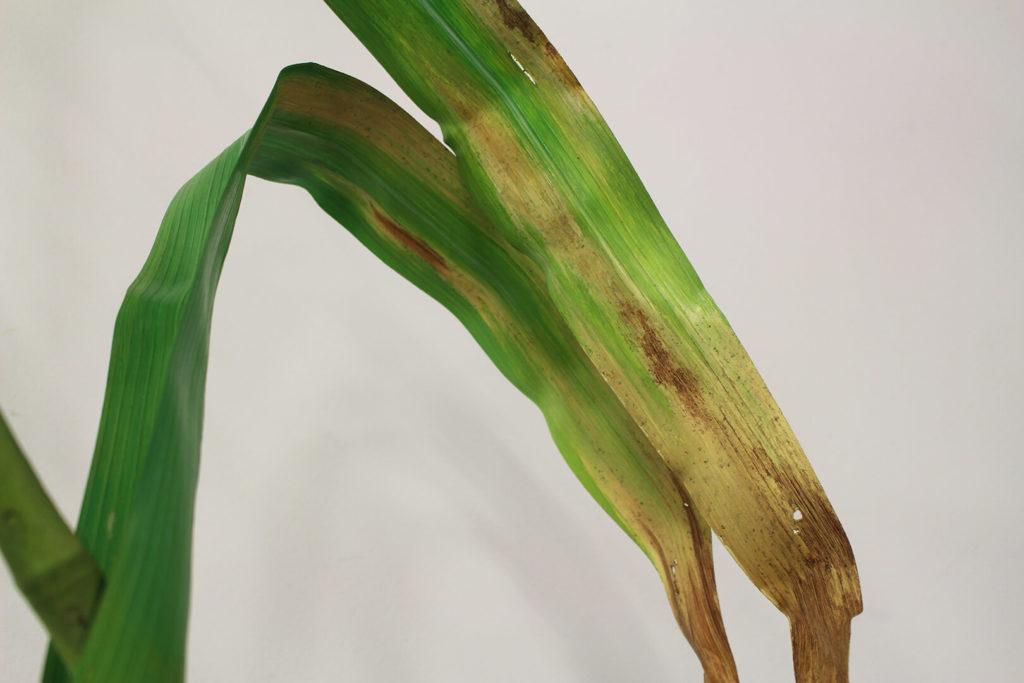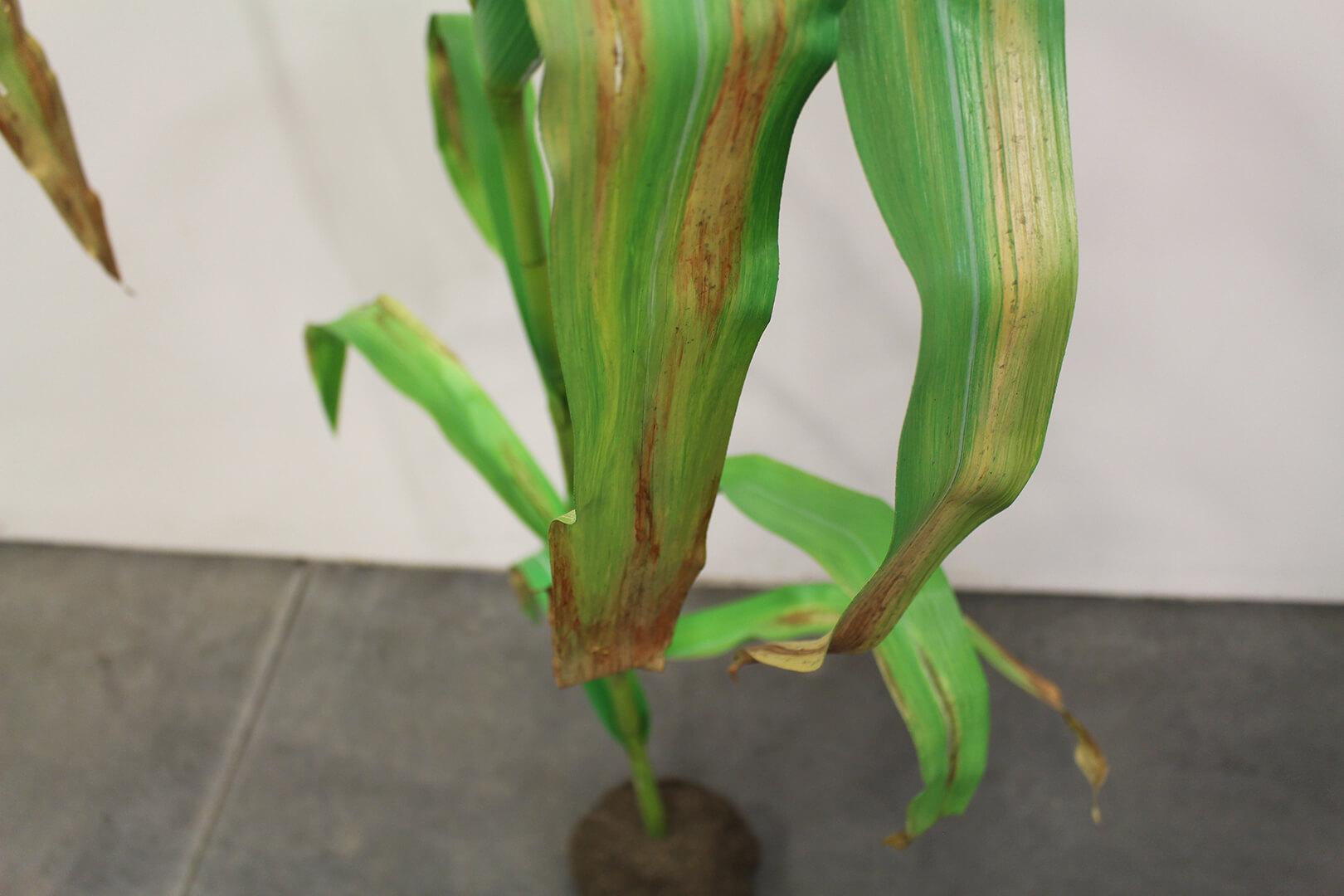
We really like plants at Exhibit Farm. Corn plants, soybean plants, sugarbeet plants. And we especially like seeing healthy plants, ready to supply people with food or industrial ingredients. But ironically, we spend a lot of our time making realistic models of unhealthy plants.
Why would we do that? Well, a lot of our clients are in the business of teaching farmers (or future farmers) how to grow stronger, healthier plants. And you have to recognize threats to plant health before you can treat them.
That’s why the plant pathology department at North Dakota State University (NDSU) asked us to make a lifelike model of a corn plant with Goss’ Wilt disease. The department wanted to prepare its graduates in case they ever came across a plant with this highly contagious disease.
(You can see more photos of the infected corn plant on our custom products page.)
What is Goss’ Wilt Disease?
Goss’ Wilt disease is mostly a problem in the Great Plains, but has been spreading to the Midwest as well. It’s a bacterial infection, which means that fungicides can’t cure it. In fact, there’s no known cure once it develops. That’s why keeping plants from getting infected is so important.
Goss’ Wilt disease mostly spreads from the tissue of infected plants, and unfortunately it uses good field management practices to its advantage. Many farmers leave their old corn crop on the fields after harvest because that benefits the soil. But if the plants were infected with Goss’ Wilt disease, the bacteria can survive the winter in the dead plants. Then, if the farmer plants corn on that field in the spring, the bacteria are there, ready to infect the new crop as well.
If farmers know their crop has been infected with Goss’ Wilt disease, though, they can choose different field management strategies to reduce the chance of the disease coming back. Recognizing the disease is crucial to protecting future crops.

Creating a Model of Goss’ Wilt Disease
We make corn plants fairly often, but this was the first time we created one showing symptoms of a certain disease. (Our previous models of unhealthy plants focused on nutrient deficiencies.) Goss’ Wilt disease causes several distinctive changes that we needed to mimic accurately.
Long lesions of dying tissue on the leaves are the most obvious symptom. They’ll often start out looking faded in color, but when the tissue dies, they turn brown. Typically, the area within the lesion looks freckled with little dark spots. These lesions also make the edges of the corn leaves wavier than usual.
Our lifelike model showed several lesions on each leaf, with varying degrees of damage. As with a real plant, some areas were completely dead while others were just beginning to develop lesions. Besides their skilled paint work, our craftsman figured out a way to give the leaves an extra-wavy texture too.
Having an accurate model of Goss’ Wilt disease means NDSU’s students can practice identifying the disease even in the middle of winter. The hands-on nature of a full-size artificial corn plant also gives the students a better understanding than pictures alone could. For an ag college that wanted some accurate teaching aids, an intentionally-imperfect plant was actually the perfect solution.
